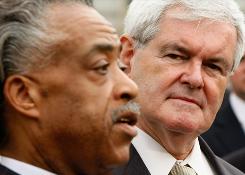By Kathy Matheson, Associated Press
ABC News
June 12, 2012
The school system’s chief recovery officer was trying to explain how broke the district is, but no one could hear him.
“Save our schools! Save our schools!”
More than 200 protesters had packed the Philadelphia school board meeting and were drowning out the official presentation; they also waved signs expressing “No confidence” in next year’s austere budget. It was the second major demonstration at district headquarters in just over a week.
The City of Brotherly Love is boiling over with frustration. It’s not just the $700 million in education cuts this past year. It’s not just a loss of state aid, which led to a massive rally and 14 arrests. And it’s not just the plan to close 40 of Philadelphia’s 249 schools within a year.
“For 10 years we’ve lived with promises that privatization and choice options would be the magic bullet to a lot of the problems,” said parent Helen Gym. “What we found is chasing after these silver bullets has really drained schools of resources and starved them to the point of dysfunction.”
Like many other cash-strapped urban districts, Philadelphia is trying desperately to emerge from a quagmire of red ink and underachievement. A state takeover in 2002 did little to eradicate the financial, academic and violence problems that have plagued the schools for years.
Philadelphia badly lags the national average in reading and math scores, ranking below even peer districts like New York, Houston and Miami. About 61 percent of local students graduate from high school; only 35 percent get a college degree.
Now, a new cadre of district leaders is determined to develop a fiscally sustainable system of safe, high-quality schools for the city’s 146,000 students. Chief Recovery Officer Thomas Knudsen has proposed cutting hundreds of central office jobs, creating management networks to










 Tomorrow, on his continuing education tour, Education Secretary Arne Duncan will be joined in Philadelphia by two gentlemen who because of their obvious differences on many levels are called the Odd Couple of education. I applaud strange bedfellows – when they make things happen for kids. With this one, I’m not so sure.
Tomorrow, on his continuing education tour, Education Secretary Arne Duncan will be joined in Philadelphia by two gentlemen who because of their obvious differences on many levels are called the Odd Couple of education. I applaud strange bedfellows – when they make things happen for kids. With this one, I’m not so sure.
